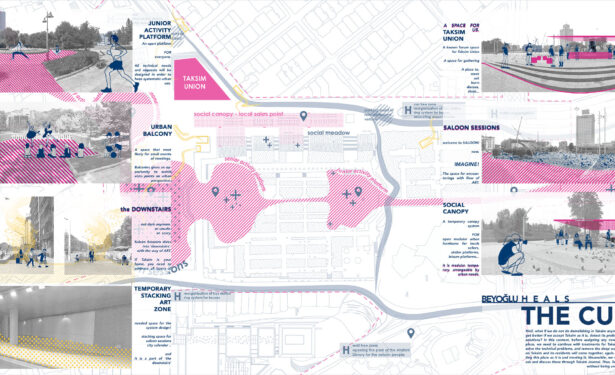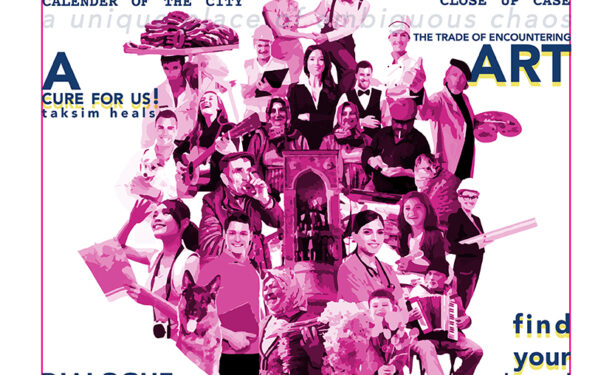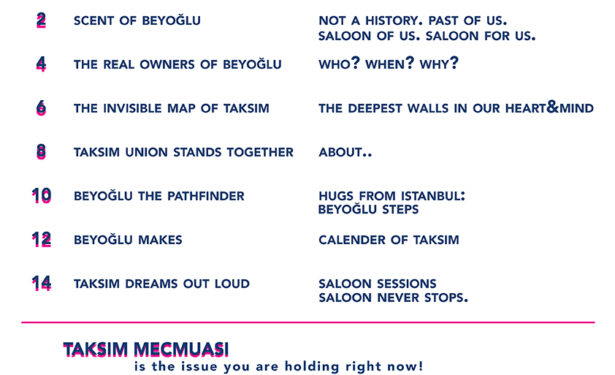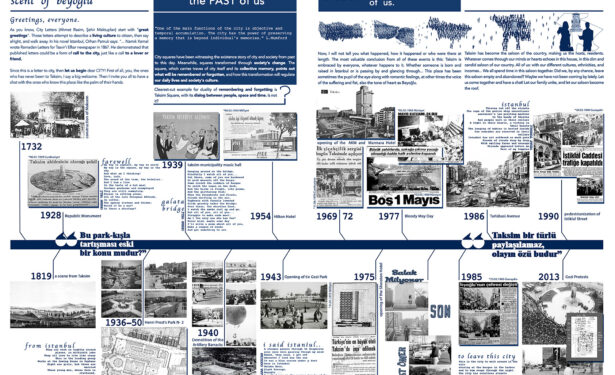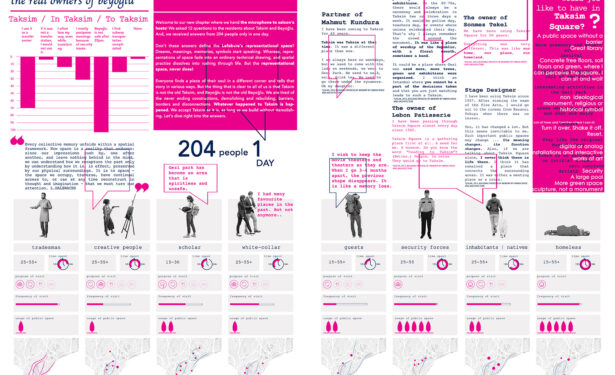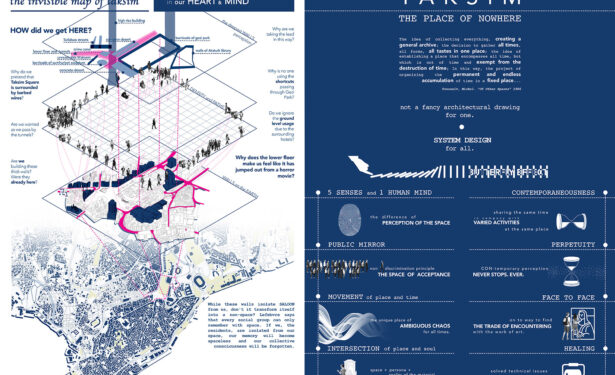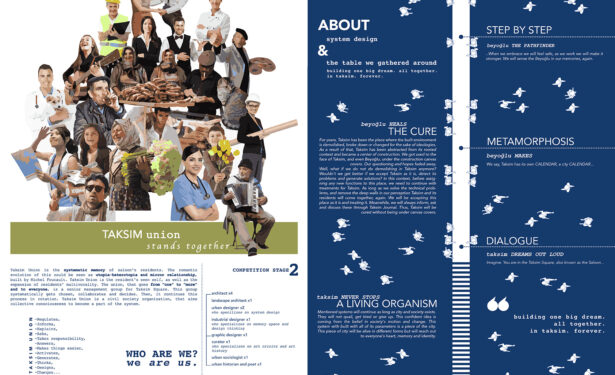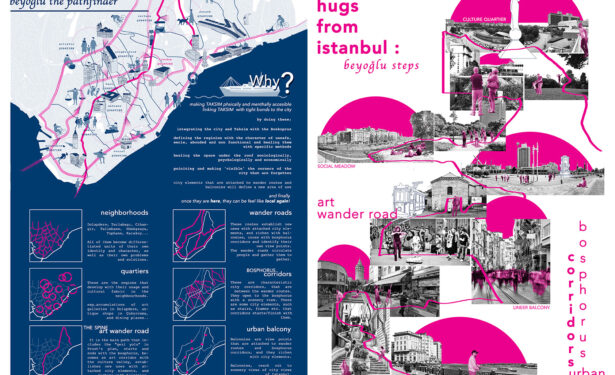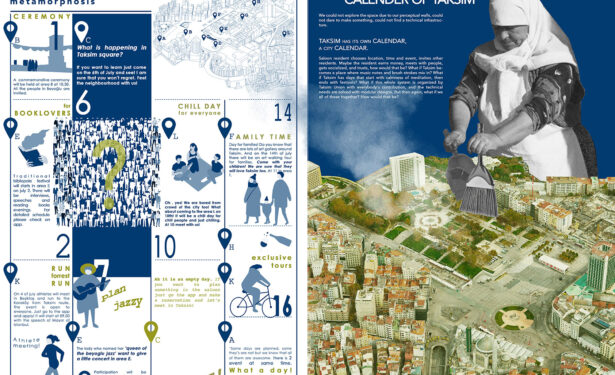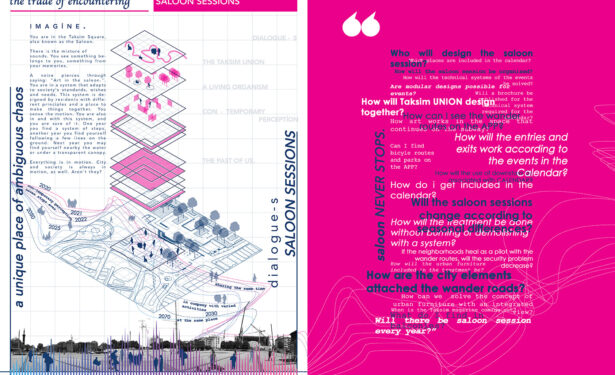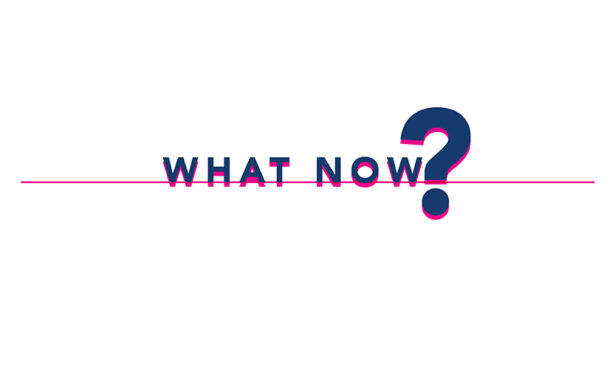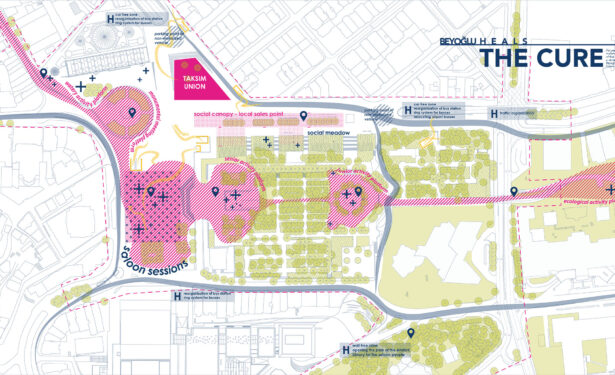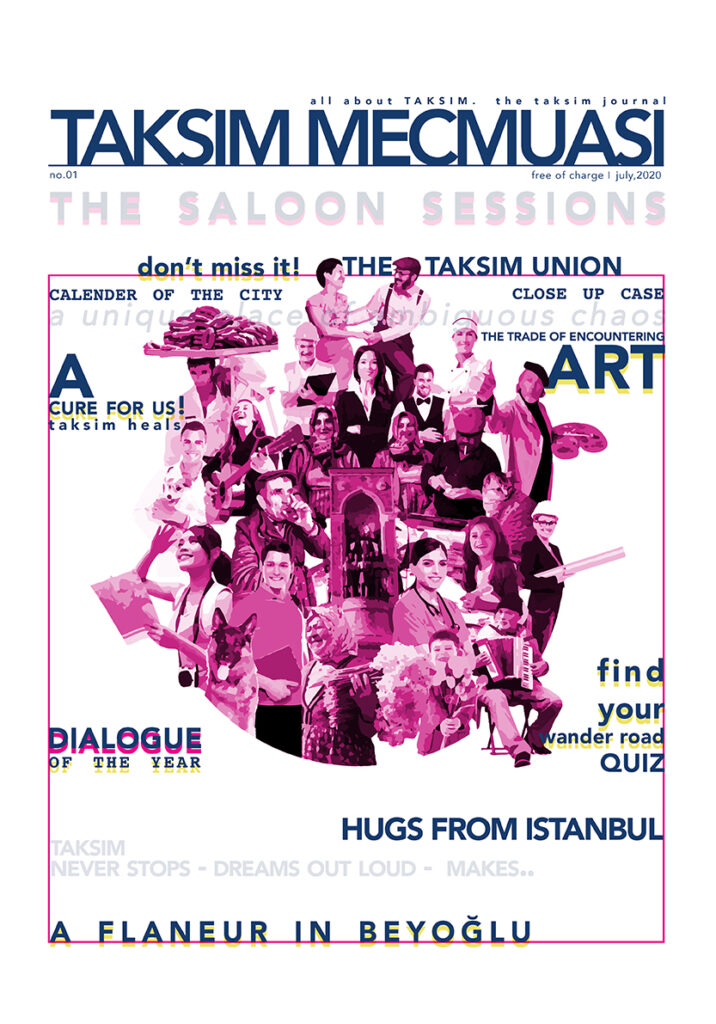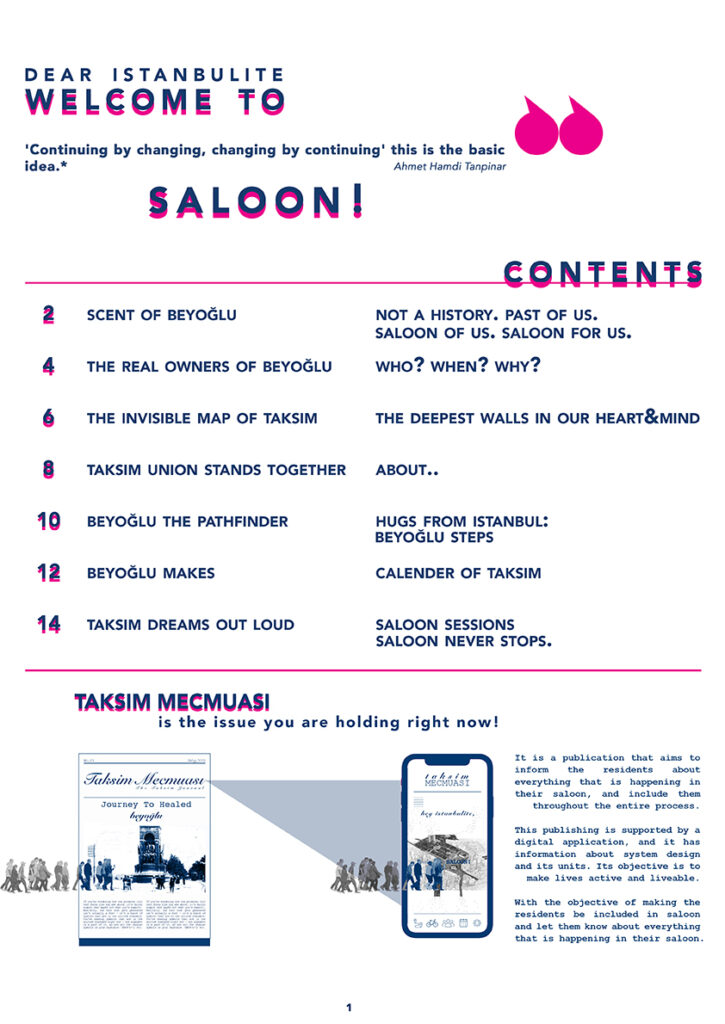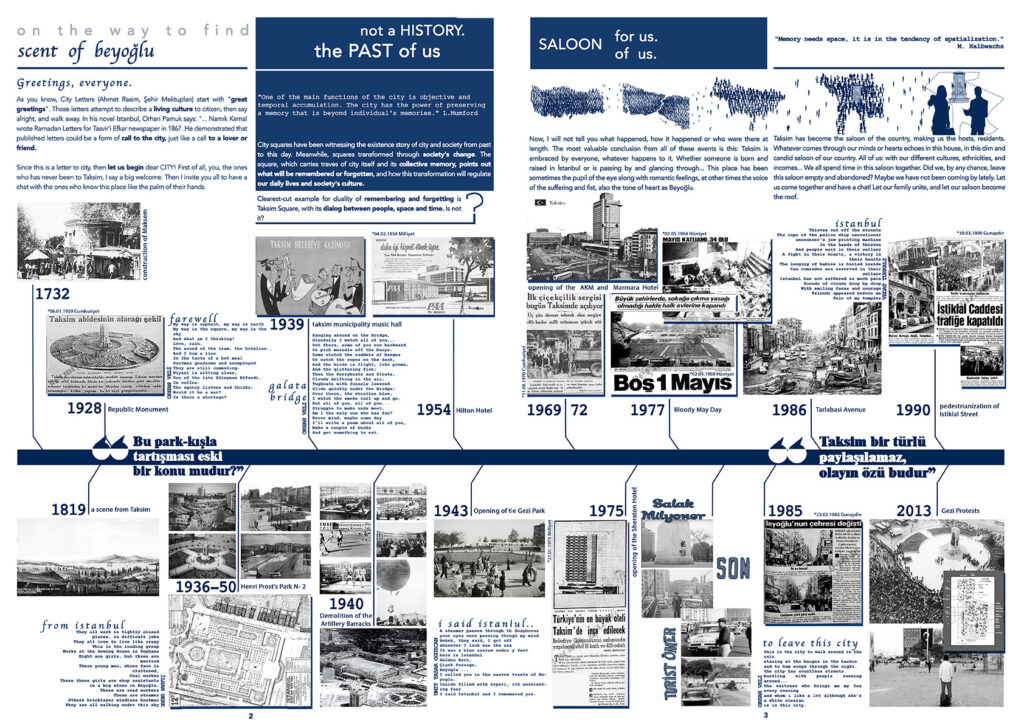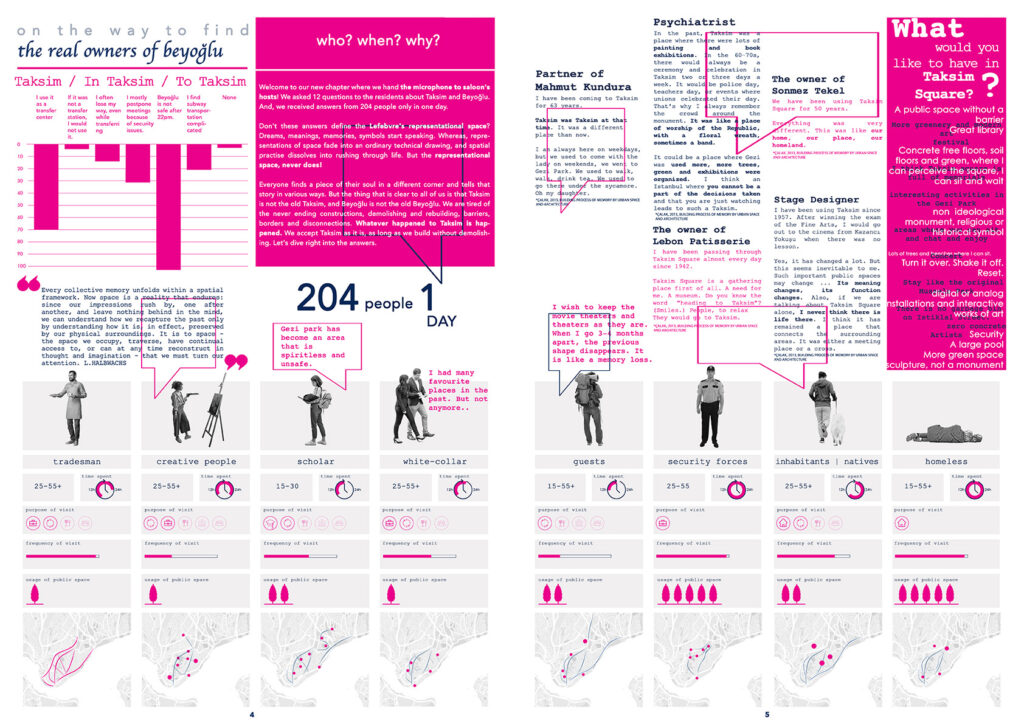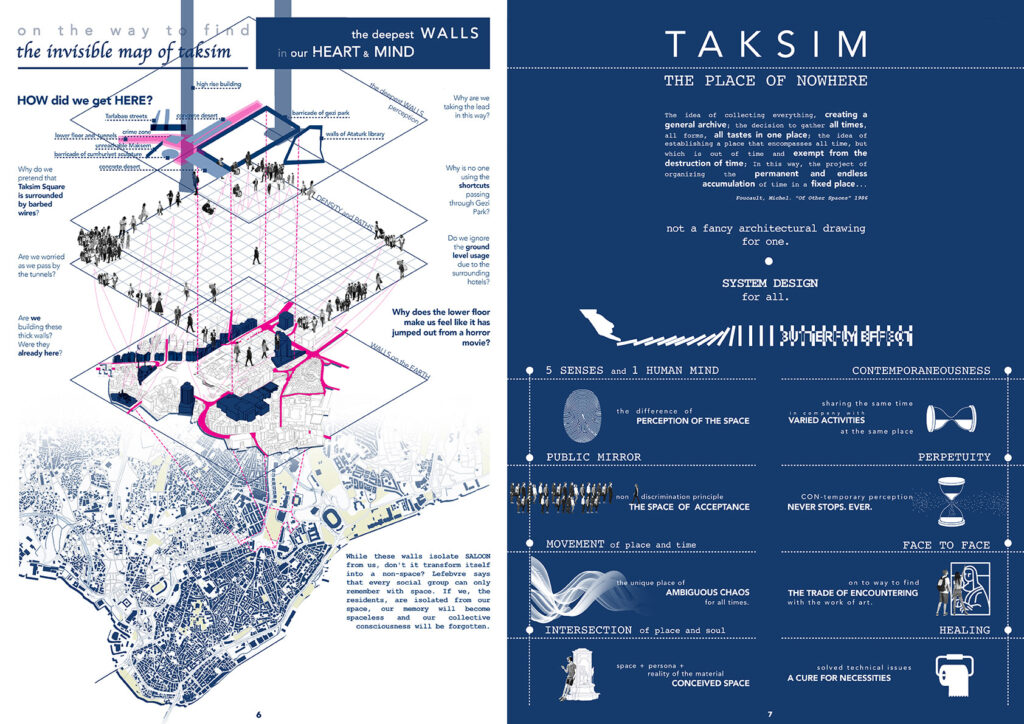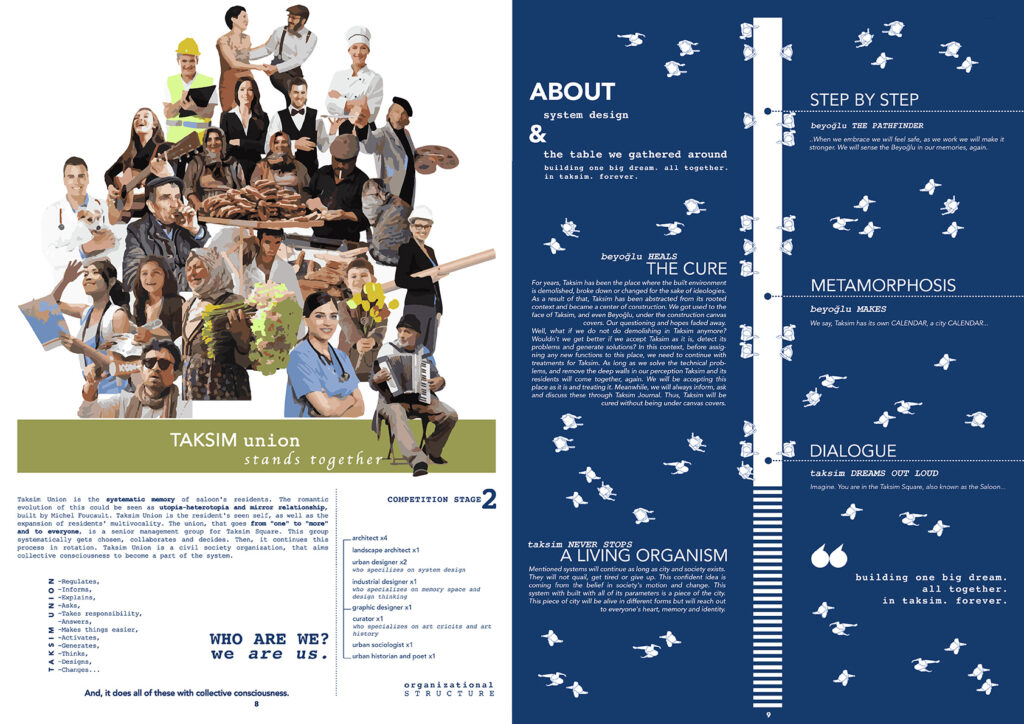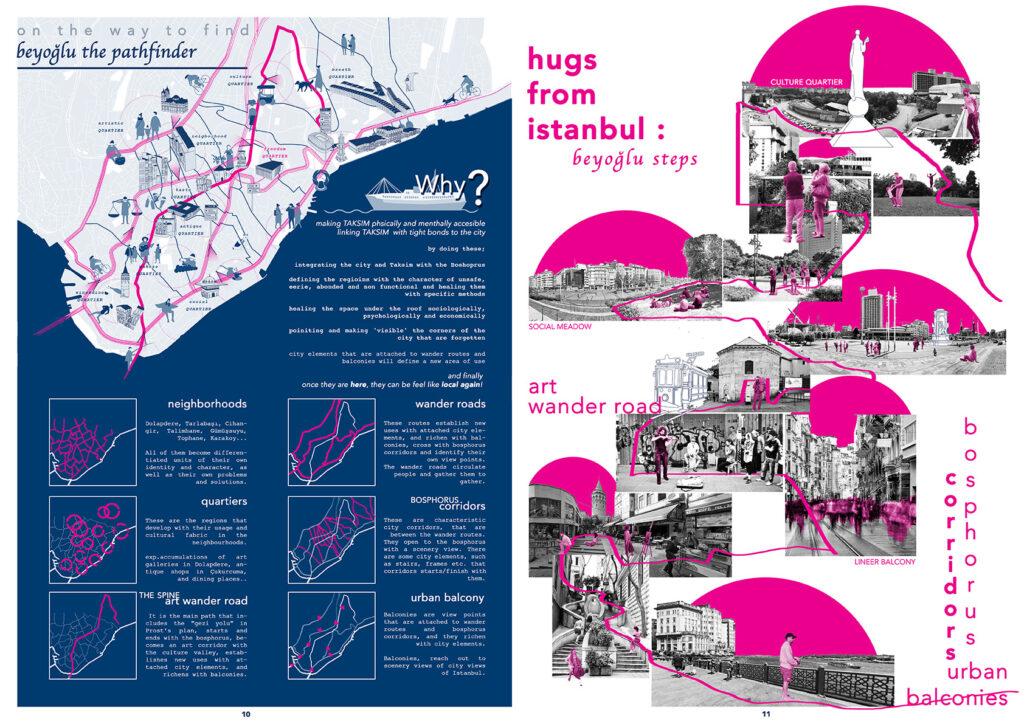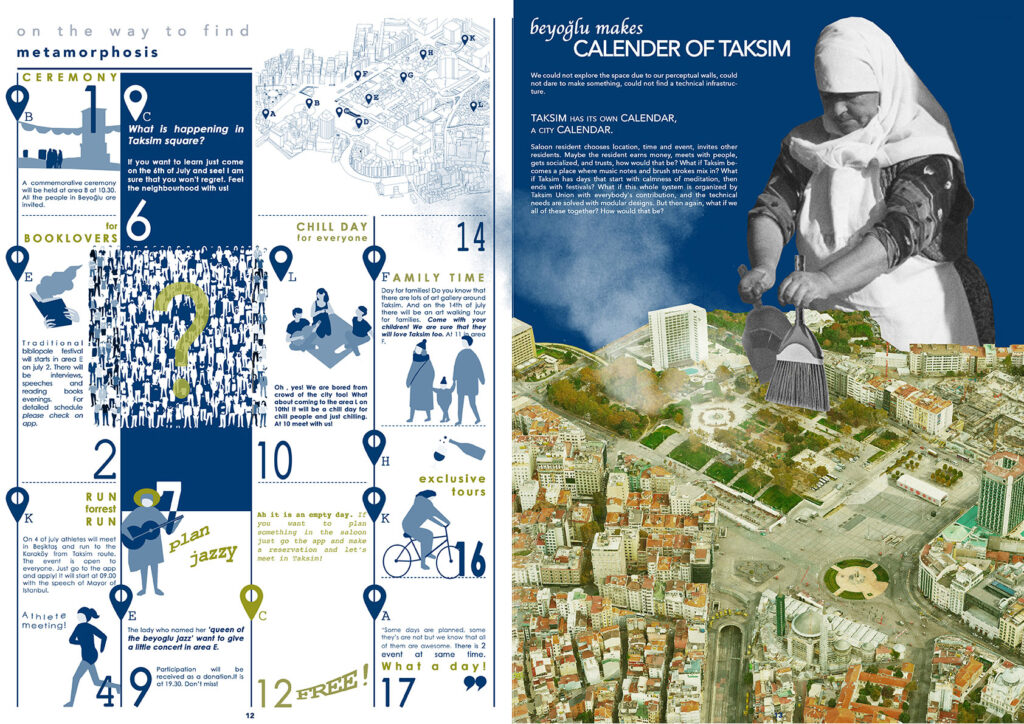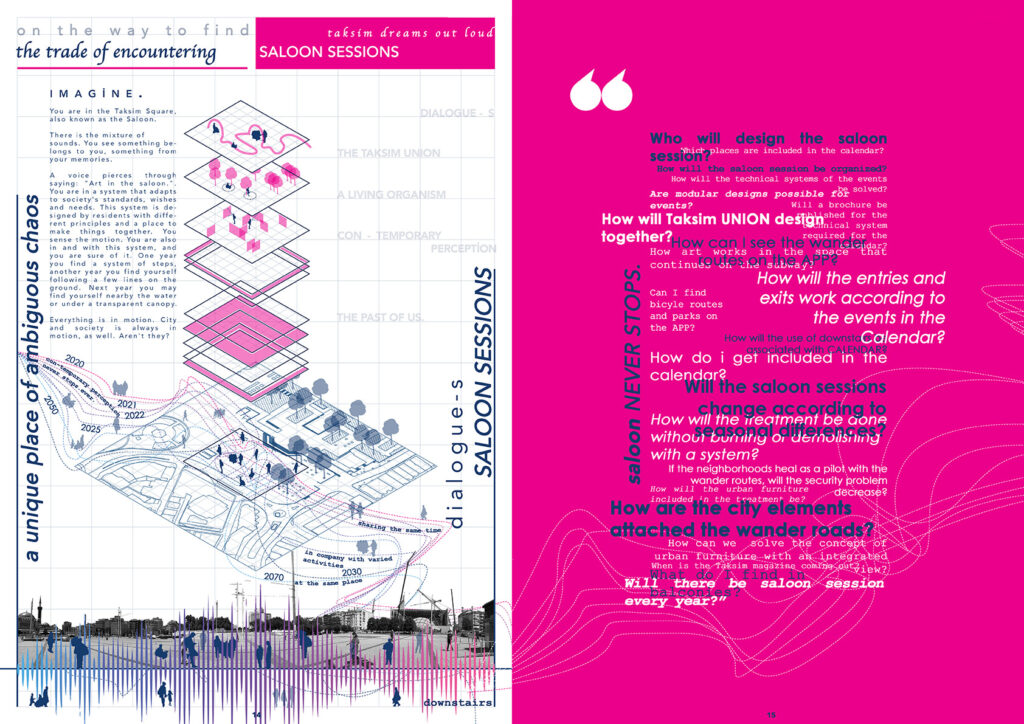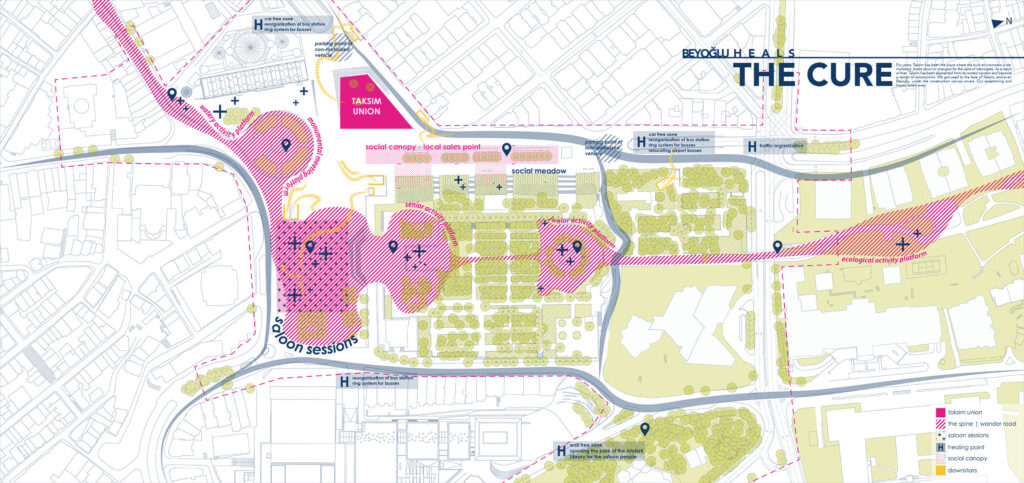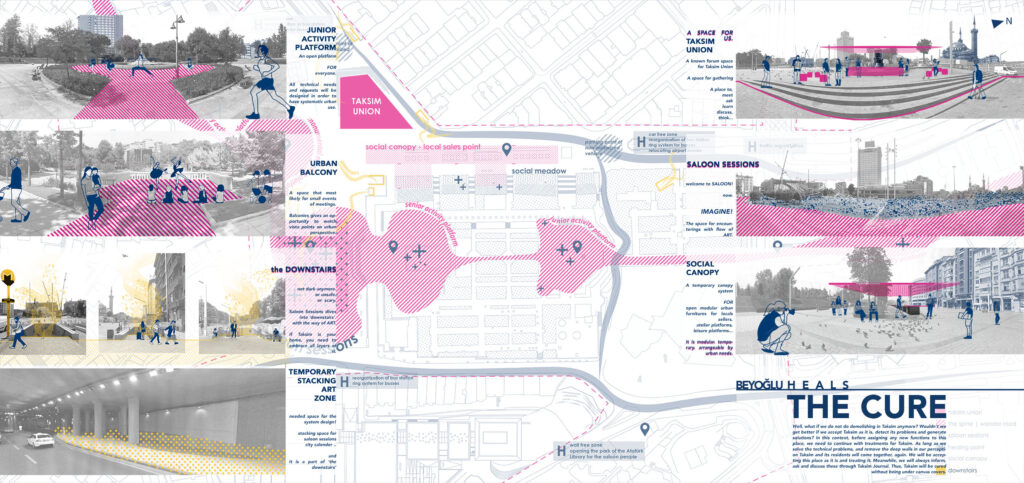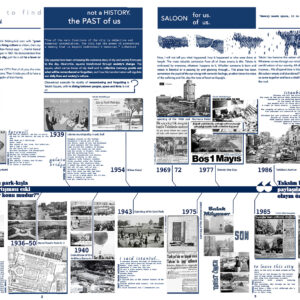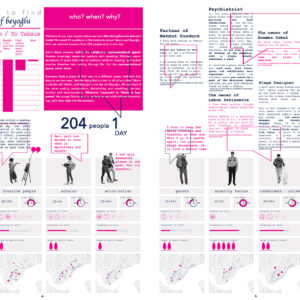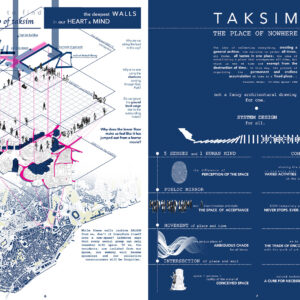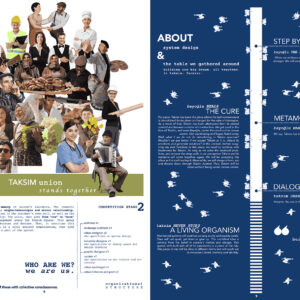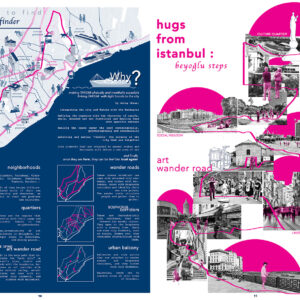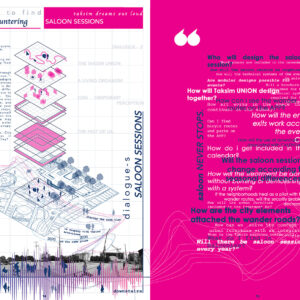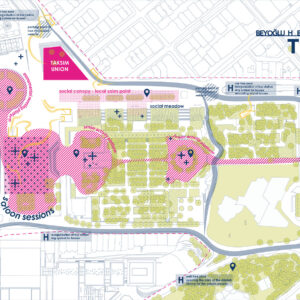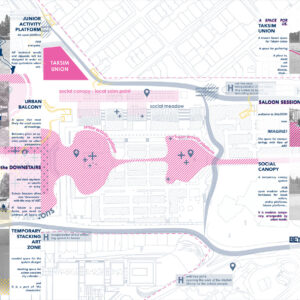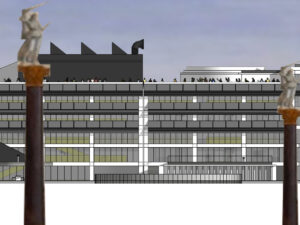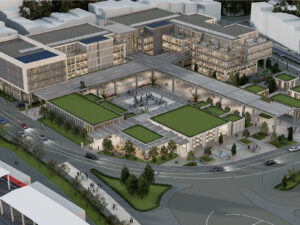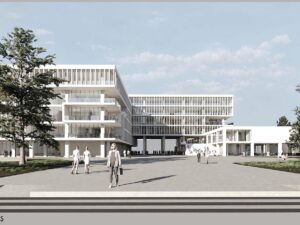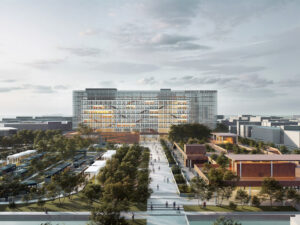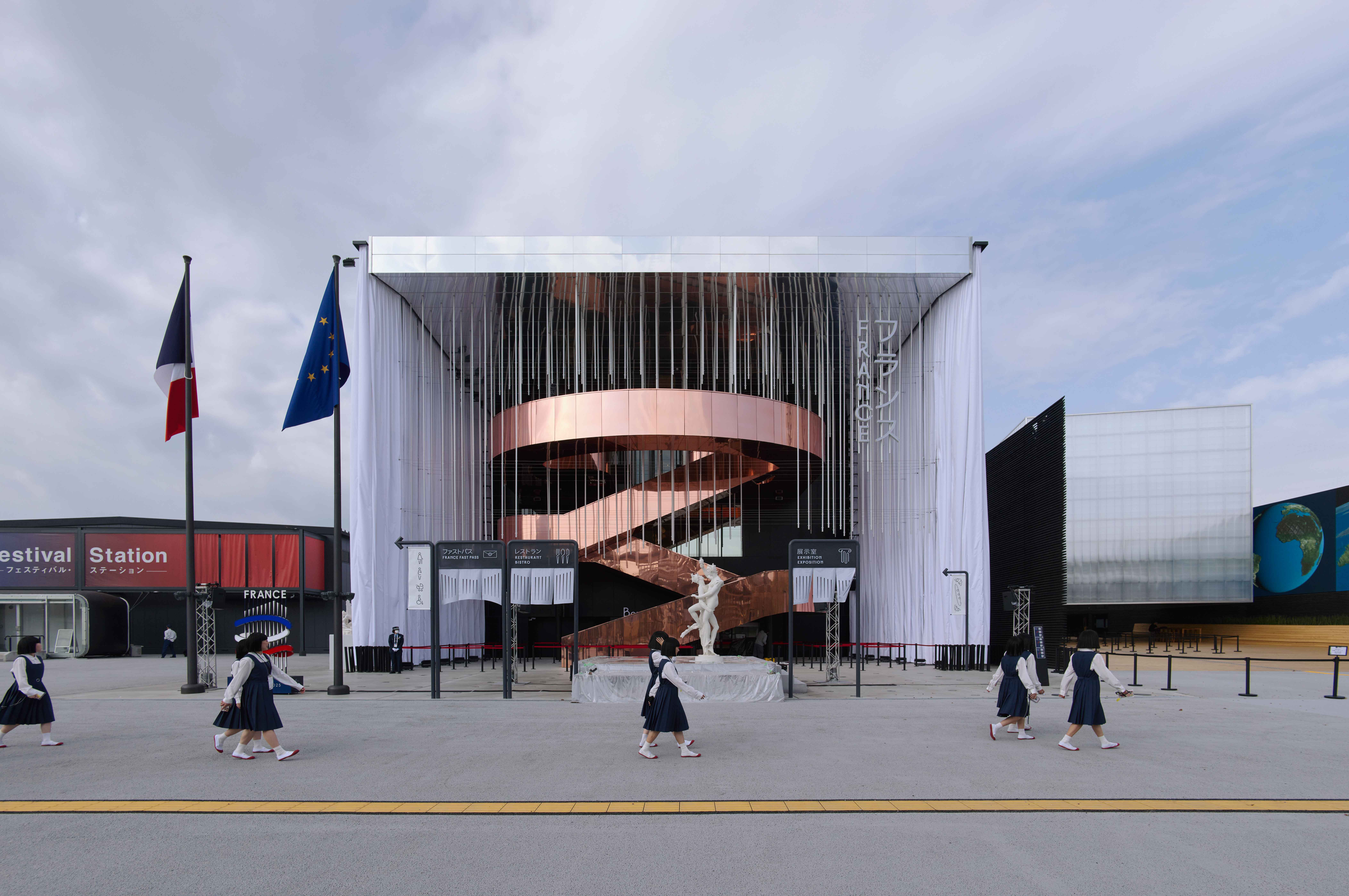- 8 Aralık 2020
- 3199 defa okundu.
Katılımcı, Taksim Kentsel Tasarım Yarışması
PROJE RAPORU
Taksim Mecmuası*
*Taksim Journal I Mecmuası, is the issue you are holding right now. It is a publication that aims to inform the residents about everything that is happening in their saloon, and include them throughout the entire process. This publishing is supported by a digital application, and it has information about system design and its units. Its objective is to make lives active and liveable.
Greetings, everyone.
As you know, City Letters (Ahmet Rasim, Şehir Mektupları) start with “great greetings”. Those letters attempt to describe a living culture to citizen, then say alright, and walk away. In his novel Istanbul, Orhan Pamuk says: “… Namık Kemal wrote Ramadan Letters for Tasvir’i Efkar newspaper in 1867. He demonstrated that published letters could be a form of call to the city, just like a call to a lover or friend.
Since this is a letter to city, then let us begin dear CITY! First of all, you, the ones who has never been to Taksim, I say a big welcome. Then I invite you all to have a chat with the ones who know this place like the palm of their hands.
“One of the main functions of the city is objective and temporal accumulation. The city has the power of preserving a memory that is beyond individual’s memories.” L.Mumford
City squares have been witnessing the existence story of city and society from past to this day. Meanwhile, squares transformed through society’s change. The square, which carries traves of city itself and its collective memory, points out what will be remembered or forgotten, and how this transformation will regulate our daily lives and society’s culture.
Clearest-cut example for duality of remembering and forgetting is Taksim Square, with its dialog between people, space and time. Is not it?
Now, I will not tell you what happened, how it happened or who were there at length. The most valuable conclusion from all of these events is this: Taksim is embraced by everyone, whatever happens to it. Whether someone is born and raised in İstanbul or is passing by and glancing through… This place has been sometimes the pupil of the eye along with romantic feelings, at other times the voice of the suffering and fist, also the tone of heart as Beyoğlu.
Taksim has become the saloon of the country, making us the hosts, residents. Whatever comes through our minds or hearts echoes in this house, in this dim and candid saloon of our country. All of us: with our different cultures, ethnicities, and incomes… We all spend time in this saloon together. Did we, by any chance, leave this saloon empty and abandoned? Maybe we have not been coming by lately. Let us come together and have a chat! Let our family unite, and let our saloon become the roof.
“Memory needs space, it is in the tendency of spatialization.” M. Halbwachs
While these walls isolate SALOON from us, don’t it transform itself into a non-space? Lefebvre says that every social group can only remember with space. If we, the residents, are isolated from our space, our memory will become spaceless and our collective consciousness will be forgotten.
Taksim Union is the systematic memory of saloon’s residents. The romantic evolution of this could be seen as utopia-heterotopia and mirror relationship, built by Michel Foucault. Taksim Union is the resident’s seen self, as well as the expansion of residents’ multivocality. The union, that goes from “one” to “more” and to everyone, is a senior management group for Taksim Square. This group systematically gets chosen, collaborates and decides. Then, it continues this process in rotation. Taksim Union is a civil society organization, that aims collective consciousness to become a part of the system.
Taksim Union,
-Regulates,
-Informs
-Explains,
-Asks,
-Takes responsibility,
-Answers,
-Makes things easier,
-Activates,
-Generates,
-Thinks,
-Designs,
-Changes…
And, it does all of these with collective consciousness.
For years, Taksim has been the place where the built environment is demolished, broke down or changed for the sake of ideologies. As a result of that, Taksim has been abstracted from its rooted context and became a center of construction. We got used to the face of Taksim, and even Beyoğlu, under the construction canvas covers. Our questioning and hopes faded away.
Well, what if we do not do demolishing in Taksim anymore? Wouldn’t we get better if we accept Taksim as it is, detect its problems and generate solutions? In this context, before assigning any new functions to this place, we need to continue with treatments for Taksim. As long as we solve the technical problems, and remove the deep walls in our perception Taksim and its residents will come together, again. We will be accepting this place as it is and treating it. Meanwhile, we will always inform, ask and discuss these through Taksim Journal. Thus, Taksim will be cured without being under canvas covers.
Mentioned systems will continue as long as city and society exists. They will not quail, get tired or give up. This confident idea is coming from the belief in society’s motion and change. This system with built with all of its parameters is a piece of the city. This piece of city will be alive in different forms but will reach out to everyone’s heart, memory and identity.
When we embrace we will feel safe, as we work we will make it stronger. We will sense the Beyoğlu in our memories, again.
We say, Taksim has its own CALENDAR, a city CALENDAR.
Imagine. You are in the Taksim Square, also known as the Saloon…
Making TAKSIM phsically and menthally accesible and linking TAKSIM with tight bonds to the city by doing these;
integrating the city and Taksim with the Boshoprusdefining the regions with the character of unsafe, eerie, abonded and non functional and healing them with specific methods, healing the space under the roof sociologically, psychologically and economicallypointing and making ‘visible’ the corners of the city that are forgettenand finally once they are here, they can be feel like local again!
• Neighbourhoods Dolapdere, Tarlabaşı, Cihangir, Talimhane, Gümüşsuyu, Tophane, Karaköy… All of them become differentiated units of their own identity and character, as well as their own problems and solutions.
• Accumulations These are the regions that develop with their usage and cultural fabric in the neighbourhoods. Accumulations of art galleries in Dolapdere, antique shops in Çukurcuma, and dining places are the main examples.
• Art Wander Route It is the main route that includes the “gezi yolu” in Prost’s plan, starts and ends with the bosphorus, becomes an art corridor with the culture valley, establishes new uses with attached city elements, and richens with vistas.
• Wander Routes These routes establish new uses with attached city elements, and richen with vistas, cross with bosphorus corridors and identify their own view points. Wander routes will draw city residents to themselves with those functions. Then the routes circulate people and gather them together.
• Bosphorus Corridors These are characteristic city corridors, that are between the wander routes, and they open to the bosphorus.
• Vistas Vistas are view points that are attached to wander routes and bosphorus corridors, and they richen with city elements.
Imagine. You are in the Taksim Square, also known as the Saloon. There is the mixture of sounds. You see something belongs to you, something from your memories. A voice pierces through saying: “Art in the saloon.”. You are in a system that adapts to society’s standards, wishes and needs. This system is designed by residents with different principles and a place to make things together. You sense the motion. You are also in and with this system, and you are sure of it. One year you find a system of steps, another year you find yourself following a few lines on the ground. Everything is in motion. City and society is always in motion, as well. Aren’t they?
We could not explore the space due to our perceptual walls, could not dare to make something, could not find a technical infrastructure.
TAKSIM has its own CALENDAR,
a city CALENDAR.
Saloon resident chooses location, time and event, invites other residents. Maybe the resident earns money, meets with people, gets socialized, and trusts, how would that be? What if Taksim becomes a place where music notes and brush strokes mix in? What if Taksim has days that start with calmness of meditation, then ends with festivals? What if this whole system is organized by
